In this series, we look at how younger voters are likely to impact future elections and American politics going forward.
As we’ve seen in these pages, the youth vote has the potential to fundamentally transform American politics. Latino voters are an important sub-group among young voters. The median age of Latino eligible voters is 39, nine years younger than the median age of all eligible voters in the United States. Conversely, only 32% of Latino eligible voters are age 50 or older, compared with nearly half of all U.S. eligible voters. This significant age gap between Latinos and non-Hispanic white Americans helps explain why Latinos continue to be a focal point of discussions regarding the increased diversity of the U.S. electorate. In this post, I take a closer look at Latino voters under the age of 30 to improve our understanding of their characteristics, policy priorities and attitudes, and recent voting behavior.
The number of Hispanic eligible voters has increased by 4.7 million since 2018, representing 62% of the total growth in U.S. eligible voters during this time. It is not just the overall growth of young Latino voters that is important, but where geographically this electorate growth is occurring, which happens to be concentrated in critical battleground states in the West. This includes Nevada and Arizona—states where young Latinos make up 40% of all newly eligible voters in the region. They were consequently identified by the Center for Information and Research on Civil Learning and Engagement as states where Latino youth participation in the 2020 election was decisive.
The youthfulness of the Latino population has important implications for the voting behavior of this important sub-group of the electorate, including Latinos having the highest ratio of first-time voters. As reflected in the figure below, 11% of Latino voters cast ballots for the first time in 2022, which is the highest percentage across all racial groups. Over a fourth (26%) of Latinos voted for the first time in either 2020 or 2022, ten percentage points higher than the national average across the electorate.

Not surprisingly, Latinos under the age of 30 are driving this trend. Almost a quarter (24%) of Latino voters between the ages of 18 and 29 voted for the first time in 2022, and a robust 56% of Latinos under the age of 30 voted for the time either in 2020 or 2022. This is an important characteristic to track, as first-time voters are not fully socialized to the voting process and will require continued mobilization to become long-term voters.
Young Latino Voters Support Democratic Candidates and Have Progressive Policy Attitudes, but Their Opinions about the Dominant Parties are Mixed
Reinforming the trends noted in the earlier Brookings post, Democrats definitely benefited from the support of young Latino voters in 2022. The 2022 Midterm Election Poll reveals that 68% of Latinos between the ages of 18 and 29 supported a Democratic House candidate in 2022, 4% higher than the overall percentage for Latino voters and a full 8% higher than Latino voters between the ages of 40 and 59.
In spite of this, the 2022 election data also suggests that young Latinos’ relationship with the Democratic Party is far from cemented. Although only 4% of Latinos under the age of 30 believe that the Democratic Party is hostile toward the Latino community, 37% report that Biden and Democrats “don’t care about the Latino community.” This is 7% higher than the percentage of African American voters under 30 who share this view of the Democratic Party.
The nuanced relationship between young Latinos and the dominant parties is reinforced by Latinos’ perception of how the GOP is treating their community. While the 22% of Latino voters under 30 who indicated that the Republican Party has been “hostile toward the Latino community” appears to bode well for Democrats, 37% of young Latino voters reported that the GOP “cares a great deal about Latinos”—the highest percentage across all age groups.
Of course, voting decisions involve more than attitudes about the parties, including policy priorities and preferences. Latino voters under 30, like all voters of color in this age range, are more likely to have progressive attitudes across a wide range of domestic public policy issues than older voters within their racial or ethnic group. Below are some of the high points from the policy items on the 2022 Midterm Election Poll:
- 81% of Latinos under the age of 30 support providing permanent legal status to DACA recipients and Dreamers.
- 76% of Latinos under the age of 30 support passing a federal law to guarantee access to abortion nationwide.
- 87% of Latinos under the age of 30 support the Inflation Reduction Act, which constitutes the largest investment ever in clean energy in an effort to reduce toxic air and carbon pollution.
- 89% of Latinos under the age of 30 support passing a new voting rights act to ensure that all eligible Americans can vote without barriers.
- 85% of Latinos under the age of 30 support closing tax loopholes and requiring all corporations with more than $1 billion in profit to pay a 15% tax.
Having garnered overwhelming support from young Latino voters, many of these policies are likely to remain part of the Biden administration’s campaign platform—representing yet another trend in the data that suggests that young Latinos could remain a key component of a Democratic coalition well into 2024 and beyond.
An important trend identified in the earlier Brookings blog about young voters is that the gender gap is closing among younger Americans. However, when we look specifically at Latino voters in 2022, we see that while the gender gap in vote choice among older Latinos has closed over time, the difference among Latino men and women under age 30 remains significant. Among Latinos overall in 2022, there is a 10% difference in vote choice based on gender, with Latinas being more likely to vote for a Democratic House candidate.
When we isolate Latino voters under the age of 30, we see a more pronounced gender gap. Young Latino males supported Republican candidates for Congress (40%) at nearly double the rate of young Latinas (21%). Conversely, three in four Latinas under 30 supported Democratic congressional candidates compared to 56% of Latino males under 30. The Democratic advantage among young Latino voters has therefore been driven largely by Latina voters, suggesting high turnout among Latinas is vital for Democrats if they do not generate an increase in Democratic vote share among Latino men.
Another important consideration for the under 30 Latino electorate is how they get their political information. Latinos as a full electorate are more likely to rely on social media than non-Latinos, a trend driven largely by the youngest cohort of Latino eligible voters.
As I have noted in an earlier Brookings post, misinformation targeting Latinos—and particularly Spanish-speaking Latinos—is a major challenge that is influencing Latino political attitudes and voting behaviors. Given that a lot of this misinformation reaching Latinos comes from social media, the higher reliance on social media among young Latinos for political information makes this a particularly important issue for this sub-group of the larger Latino electorate. This is reflected in higher levels of concern among young Latino voters that there is “widespread voter fraud and we cannot trust election results.” According to the 2022 Midterm Election Survey, 42% of Latinos under 30 share this concern compared to 34% of Latino voters aged 60 or older.
Making projections about how the Democratic advantages among young Latino voters could impact the national political landscape is challenging. On one hand, the political science literature suggests that voting preferences tend to remain rather stable as voters age. This, along with the progressive policy values that Latino voters under the age of 30 have demonstrated, makes Democrats feel very optimistic about the long-term relationship they may have with young Latino voters.
In closing, any decision by SCOTUS regarding the potential limitation of a commonly used abortion pill could have huge implications for the short-term voting behavior of young Latinos. Given that a higher percentage (42%) of Latinos under 30—more than any other Latino age group—said that the “Supreme Court striking down the right to an abortion and allowing states to ban abortions” was their primary motivation to vote in 2022, the outcome of this decision could be a major mobilizing factor for young Latino voters in 2024.
[1] The survey data referenced herein was produced independently by a third-party firm, BSP Research on behalf of the African American Research Collaborative. Outside of his work at Brookings, Dr. Gabriel Sanchez serves as Director of Research for BSP Research and was part of the group of scholars who designed and implemented this survey.
The Brookings Institution is committed to quality, independence, and impact.
We are supported by a diverse array of funders. In line with our values and policies, each Brookings publication represents the sole views of its author(s).


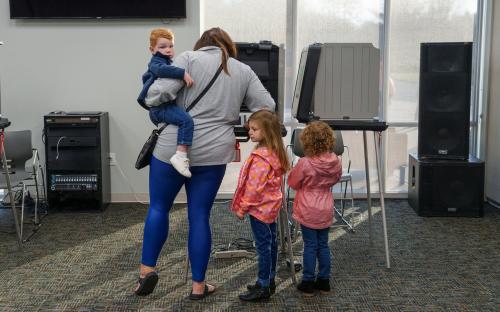
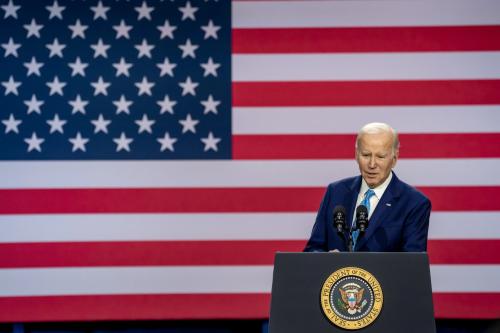
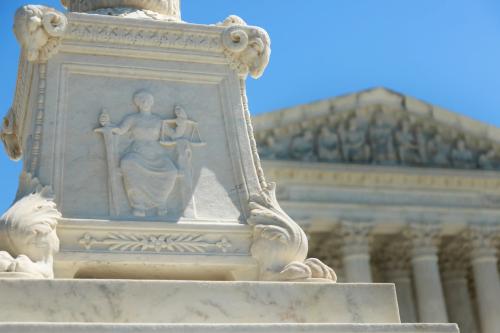


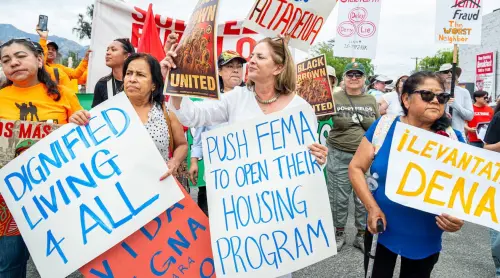
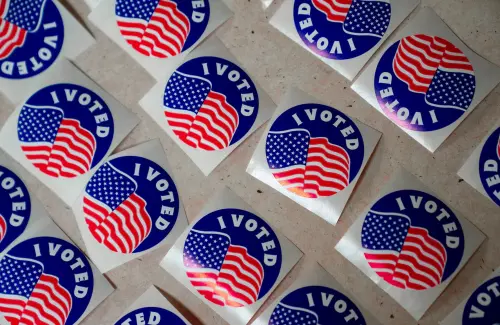
Commentary
How younger voters will impact elections: Young Latino voters will be vital to the outcome of the 2024 election
May 2, 2023